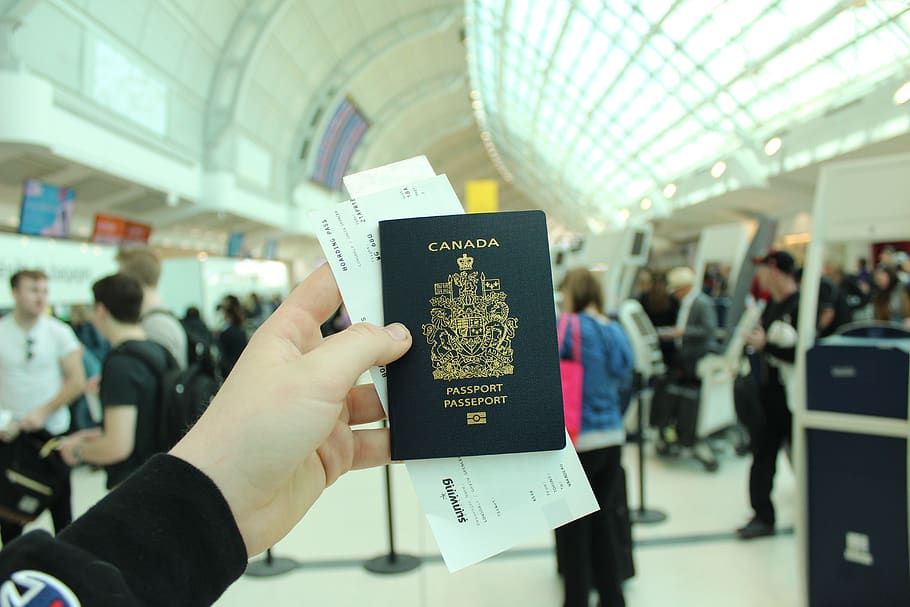Difference Between SDS And Non-SDS Visa Applications
Rachit Tewari
·
07 Nov 2023
- study abroad
- visa
- Academics
- universities
- Study in Canada

When it comes to applying for a student visa to study abroad, the process can be quite complex. Understanding the nuances of different visa application streams is crucial to ensure a smooth and successful application. In this article, we will explore the fundamental differences between the Student Direct Stream (SDS) and Non-SDS visa applications, helping prospective international students make informed decisions about their visa application route.
SDS Visa Application
What is SDS?
SDS, or the Student Direct Stream, is a specialized application stream for international students applying for a study permit to Canada. It is designed to expedite the visa application process and ensure a streamlined experience for eligible applicants.
Key Features of SDS
Eligibility Criteria:
To apply through the SDS, you must meet certain eligibility criteria, which often include a set of requirements such as language proficiency, financial capacity, and an unconditional acceptance letter from a Designated Learning Institution (DLI).
Faster Processing:
SDS offers faster processing times, with most applications typically processed within a month. This is a significant advantage for students who want to start their studies quickly.
Upfront Documentation:
SDS requires applicants to provide a more comprehensive set of documents upfront, which helps expedite the process. These documents may include proof of funds, language test results, and a medical exam.
Biometrics:
Applicants under SDS are usually required to provide biometrics (fingerprints and photographs) as part of the application process.
Country-Specific Requirements:
The specific requirements for SDS may vary depending on your home country, so it's essential to check with the Canadian embassy or consulate in your region.
Benefits of SDS
Faster processing times
Greater clarity in the application process
Reduced financial documentation requirements
Streamlined application procedures
Non-SDS Visa Application
What is a Non-SDS Application?
Non-SDS, as the name suggests, refers to all other types of student visa applications that do not fall under the Student Direct Stream. This includes applications for study permits in countries other than Canada or applications that do not meet the SDS criteria.
Key Features of Non-SDS
Varied Processing Times:
Non-SDS applications typically have more variable processing times. The processing time can range from a few weeks to several months, depending on the country and the specific circumstances of the applicant.
Flexibility in Document Submission:
Non-SDS applications may not require the extensive upfront documentation that SDS applications do. This can offer more flexibility but may lead to longer processing times.
Country-Specific Requirements:
Just like SDS, non-SDS applications may have country-specific requirements. It's crucial to research the specific requirements for the country you are applying to.
Benefits of Non-SDS
More flexibility in document submission
Suitable for applicants who do not meet SDS criteria
Available for study permits in various countries
Making the Right Choice
When deciding between SDS and Non-SDS visa applications, consider the following factors:
Country of Study:
If you're planning to study in Canada, SDS might be a favorable option due to its faster processing times. For other countries, non-SDS applications are the norm.
Eligibility:
Ensure you meet the eligibility criteria for SDS. If you don't, a non-SDS application is the way to go.
Timing:
Consider your application timeline. If you need to begin your studies as soon as possible, SDS can expedite the process.
Documentation:
Evaluate your capacity to provide the required documents upfront. SDS applications demand more comprehensive documentation.
Conclusion
The choice between SDS and Non-SDS visa applications depends on your individual circumstances and the country where you plan to study. The Student Direct Stream is an excellent option for those who qualify, offering streamlined processing and quicker access to your study destination. On the other hand, non-SDS applications provide flexibility for a broader range of students but may have longer processing times. Research, plan, and choose the application stream that aligns best with your educational goals and timeline. A well-informed decision will set you on the path to a successful study abroad experience.
What more, Horse's Mouth offers a unique opportunity for prospective international students to connect with current university students and alumni who have first-hand experience with the application process. These mentors can provide valuable insights and guidance, helping you make informed choices about your visa application route. So, whether you're considering the streamlined process of the Student Direct Stream or exploring non-SDS options, don't hesitate to seek advice and clarity from the knowledgeable individuals available at Horse's Mouth.
If you wish to hear the personal experience of a current student/alumnus over a FREE one-on-one call, check out these profiles on Horse’s Mouth.
FAQs
How does SDS differ from regular visa applications?
SDS is specific to Canada and has stricter eligibility criteria, faster processing times, and upfront document requirements. Regular applications, or Non-SDS, vary by country and often have more flexible timelines and document submission options.
Who is eligible for the SDS application stream?
Eligibility criteria for SDS may include having an unconditional acceptance letter from a Designated Learning Institution (DLI), language proficiency, proof of funds, and other specific requirements depending on your home country.
Are there downsides to using the SDS application stream?
SDS may have stricter eligibility criteria, and applicants are usually required to provide biometrics, which can add to the overall cost of the application.
Can I switch from Non-SDS to SDS during the application process?
Depending on your eligibility and the country's policies, you may be able to switch from Non-SDS to SDS. However, it's essential to check with the relevant authorities for specific guidance.
Where can I find more information and guidance on SDS and Non-SDS applications?
Platforms like Horse's Mouth connect you with experienced mentors who can provide personalized guidance and valuable insights into the visa application process. They offer a unique opportunity to get information straight from the source and make well-informed decisions about your study abroad journey.
For any queries/issues contact:
Raunak Ash Gulati:
📞 +91 77689 01177
✉️ hello@horsesmouth.in
